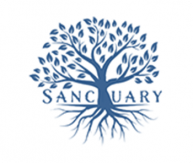What Does California Sober Mean?
The California sober lifestyle isn’t limited to people who live in California, and it doesn’t require actual sobriety. So what, exactly, does this term mean?
What Does California Sober Mean?
California sober is an informal term that is typically used to describe a “healthier” approach to substance use that is focused on limiting yourself to a few drugs instead of aiming for complete abstinence.
There’s no standard, universally agreed-upon definition for California sober. For some people, it means avoiding all drugs except cannabis (marijuana). For others, it means limiting their substance use to alcohol and weed. In still other cases, psychedelics may be included in the list of acceptable substances, either with or without alcohol.
The two most common aspects of California sober seem to be an acceptance of marijuana and a refusal of so-called hard drugs such as heroin, cocaine, meth, and PCP.
Just as there’s no consensus on what California sober means, there’s also a lack of certainty about the term’s origins. Many sources cite an April 2019 newsletter from VICE, in which writer Michelle Lhooq describes limiting herself to marijuana and some psychedelics as adopting a “Cali sober” lifestyle.
However, Lhooq notes in her newsletter article that Cali sober is “a term some people also use when they quit everything but weed,” which implies that the concept didn’t start with her.
What Are the Main Concerns With Living a California Sober Lifestyle?
In 2021, Demi Lovato released a song titled California Sober. The title referred to their choice to use only weed and alcohol after nearly dying from an opioid overdose in 2018.
Lovato has since disavowed this approach, saying that “All I did was replace my addiction with something I thought was safer.”
Risk of Relapse
Frequently using drugs in greater amounts or for a longer period of time than intended is one of the criteria for a substance use disorder. This criterion is outlined in the fifth edition of the Diagnostic and Statistical Manual of Mental Disorders (DSM-5).
Through treatment and effort, a person can learn to manage their compulsions and regain control of their behaviors. However, most experts see substance use disorders as chronic conditions, which means that people aren’t ever fully cured, but remain in continuous recovery.
From this perspective, attempts to have “just one drink” or a few bong hits can quickly lead to a full-blown relapse and a return to uncontrolled drug use.
Illusion of Safety
A second concern about the California lifestyle is that it implies that some drugs are safe to use, while others pose an unacceptable risk.
There’s no doubt that different substances present different dangers. For example, few people would equate drinking one beer with injecting one dose of heroin. However:
- As alluded to in the previous subsection, for someone with a history of addiction, having one beer can lead to a devastating downward spiral, just like having one dose of heroin could.
- Safer isn’t a synonym for safe. Every addictive or mind-altering substance has the potential to cause considerable, possibly irreversible, harm. This doesn’t only refer to the risk of addiction. It also acknowledges the many other types of physical, psychological, and social damage. A person may expose themselves to these risks when using alcohol, marijuana, psychedelics, or other substances.
Sober Means Sober
A third concern about describing yourself as California sober is that it undermines the meaning of words like sober and sobriety.
Within the recovery community, these words are absolutes. This means that you can’t be mostly sober any more than you can be a little bit pregnant or somewhat dead. If you’re not using any substances, you’re sober. If you are using any substances, you’re not sober.
This concern may not appear to be as substantial as the previous two mentioned in this post. But for people who have been working diligently to remain substance-free in the aftermath of active addiction, changing the meaning of the word sober alters a fundamental principal of recovery itself.
Common Misconceptions About California Sober Living
Another concern about this approach is that people who attempt it are basing their efforts on misinformation or misunderstandings. Many misconceptions about California sober living relate to topics already mentioned in this post. However, their potential impact makes it important to revisit them.
To be clear, statements like the ones listed below are not accurate, and they can be sources of great harm. But the unfortunate truth is that you probably wouldn’t have to spend much time online before finding people who believe them:
- California sober describes a lifestyle with established rules and limitations.
- Alcohol and marijuana are safe substances.
- As long as you avoid hard drugs like heroin and cocaine, you’ll be fine.
- Moderate substance use is a sustainable approach for anyone who has previously struggled with compulsive, uncontrollable drug abuse.
- If you only use a few drugs, or limit yourself to infrequent substance use, you can still describe yourself as sober.
How California Sober Differs from Other Recovery Approaches
For decades, the dominant perspective on recovery in the U.S. has been the 12-Step model that was established by the founders of AA in the late 1930s.
Here are a few ways that California sober differs from this approach:
- You don’t need to give up all substances.
- You define sobriety in whatever way you feel works for you.
- You don’t have to admit that you are powerless over alcohol or other drugs.
- You don’t have to turn your life over to a higher power.
- There’s no established peer-support component.
One of the more popular alternatives to the 12-Step model is SMART Recovery. Similar to California sober, this approach lacks the spiritual element of the 12-Step model. It allows participants to choose their own methods and set their own goals.
However, California sober differs from SMART Recovery is a few key ways, such as:
- There are no meetings or established means of mutual support.
- SMART Recovery takes an evidence-based approach, while California sober isn’t based on any science or research.
- California sober doesn’t address the mental, behavioral, or social aspects of addiction and recovery.
Contact Sanctuary If You Need Help With Returning to Complete Sobriety
If you need help to end your substance use and start living a truly sober lifestyle, Sanctuary Treatment Center is here for you.
Our rehab center in Los Angeles offers a full continuum of care. This includes medical detox, residential treatment, and outpatient programming. We’ll work closely with you to assess your needs. Based on this, we’ll recommend programs and services to guide you toward a healthier future.
To learn more about how we can help you or a loved one, or to schedule a free consultation, please visit our Contact page or call us today.












